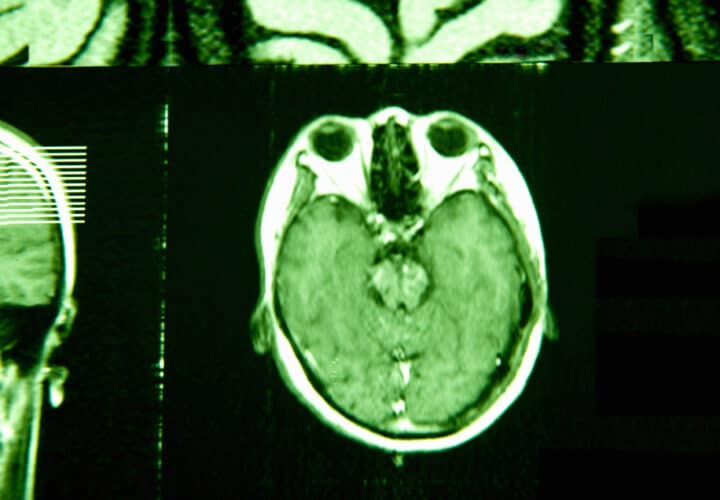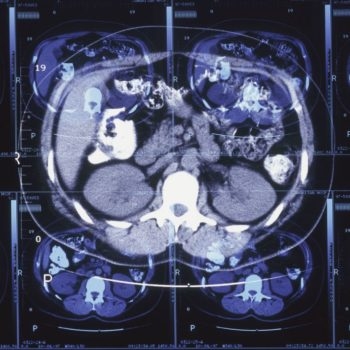"The fact that there is still no effective treatment for Alzheimer's is partly because current therapies start much too late."
Tracking changes in a certain protein found through a simple blood test could detect Alzheimer’s up to a decade before other symptoms like memory loss appear, according to a new study carried out by researchers from Washington University School of Medicine in St. Louis and the German Center for Neurodegenerative Diseases in Germany.
The results from the study could help doctors pinpoint who might get the disease. And while there is no cure or drug that meaningfully stops or slows the progression of Alzheimer’s, finding out who will likely develop the disease could still be a game changer.
“The fact that there is still no effective treatment for Alzheimer’s is partly because current therapies start much too late,” said Mathias Jucker, a senior researcher at the DZNE’s Tuebingen site and at the HIH.
Many Alzheimer’s researchers share this view, which has resulted in clinical trials looking for participants who do not yet show signs of the disease but are at high risk. The idea is that a cure may only work if it gets to the brain when the damage is just beginning, rather than after most cell and neuron death has occurred.
For the study, scientists looked at individuals with a high likelihood of developing Alzheimer’s in their 30s, 40s and 50s—a group of people part of the DIAN network, or the Dominantly Inherited Alzheimer’s Network. A parent carrying the early-onset mutation has a 50 percent chance of passing it on to their child—and any child with the variant will almost inevitably get Alzheimer’s around the same age their parent did. Studying a group of people with that gene allows scientists to observe what is happening in the brain in the years leading up to the symptoms of Alzheimer’s.
The protein they were tracking occurs in blood when brain cells die. “Normally such proteins are rapidly degraded in the blood and are therefore not very suitable as markers for a neurodegenerative disease,” explained Jucker. “An exception, however, is a small piece of so-called neurofilament that is surprisingly resistant to this degradation.”
The study involved 247 people who carry the early-onset genetic variant and 162 of their unaffected relatives. When they looked at the neurofilament protein in the brains of people with the gene, they found that levels started differing 16 years before cognitive symptoms might show up. About 7 years before symptoms, the protein markedly changed.
There have been other tests that show promise in recent studies that look at how much amyloid build-up is occurring in the brain. Amyloid is the toxic protein that accumulates in Alzheimer’s and the target of most Alzheimer’s experimental therapies. But not everyone agrees that amyloid is the cause of symptoms like memory loss. This test relies on another measure of the brain’s state.
“Our blood test does not look at the amyloid, but at what it does in the brain, namely neurodegeneration. In other words, we look at the death of neurons,” says Jucker.
That means the test could be useful in diagnosing other neurodegenerative diseases.
“This is something that would be easy to incorporate into a screening test in a neurology clinic,” said Brian Gordon, Ph.D., an assistant professor of radiology at Washington University’s Mallinckrodt Institute of Radiology and an author on the study. “We validated it in people with Alzheimer’s disease because we know their brains undergo lots of neurodegeneration, but this marker isn’t specific for Alzheimer’s. High levels could be a sign of many different neurological diseases and injuries.”
There is a kit available to consumers that could measure the protein researchers looked at in the blood. But those involved said more work needs to be done before everyday people should start worrying about whether the levels of the particular protein are high, especially considering that this study only involved people with a certain genetic disposition for Alzheimer’s.
“I could see this being used in the clinic in a few years to identify signs of brain damage in individual patients,” said Gordon. “We’re not at the point we can tell people, ‘In five years you’ll have dementia.’ We are all working towards that.”




“There is a kit available to consumers that could measure the protein researchers looked at in the blood”
You didn’t mention what protein it is? And where would one find this kit?